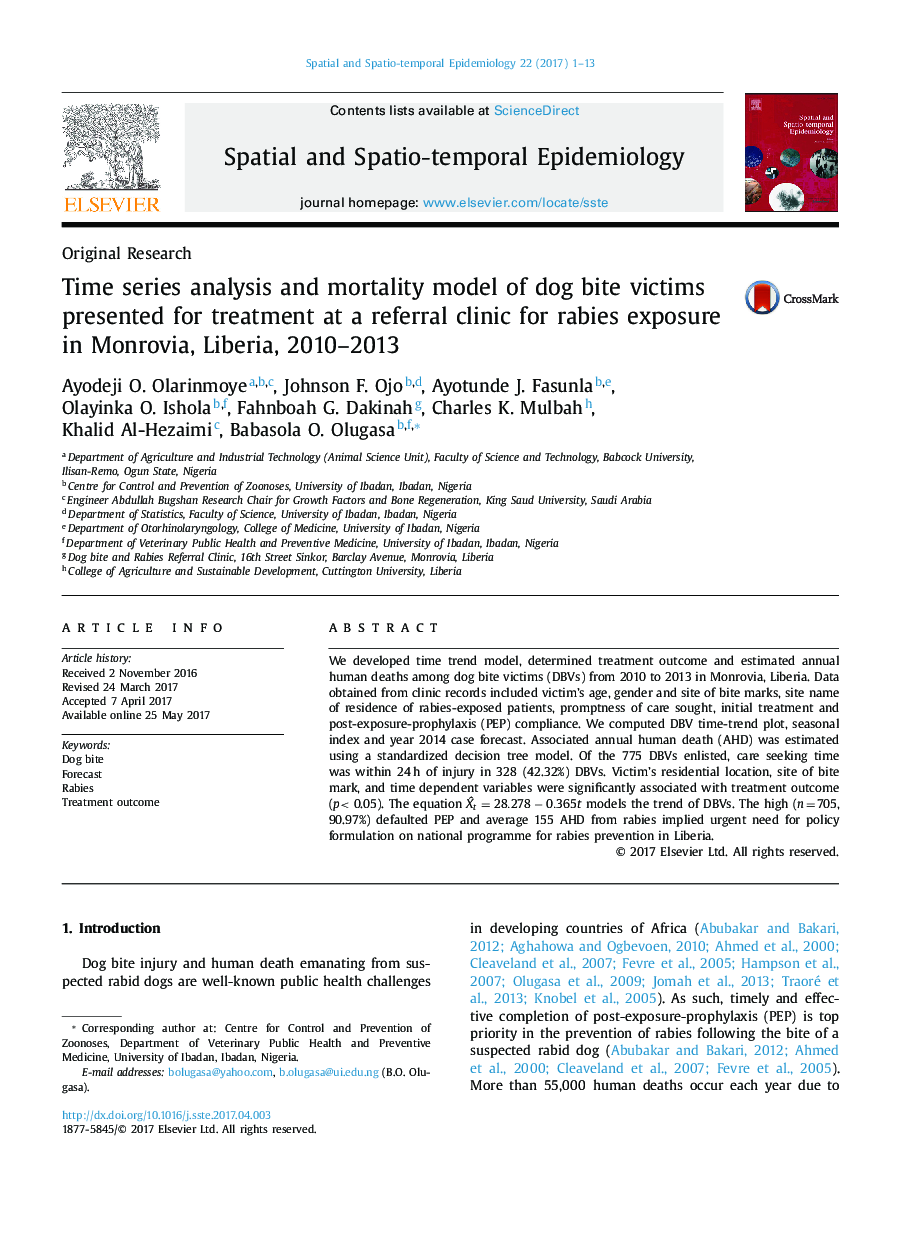| Article ID | Journal | Published Year | Pages | File Type |
|---|---|---|---|---|
| 5118930 | Spatial and Spatio-temporal Epidemiology | 2017 | 13 Pages |
â¢Delayed rabies post-exposure-prophylaxis increased poor treatment outcome.â¢Compliance with rabies post-exposure-prophylaxis gave good treatment outcome.â¢Linear time-trend model offered practical tool for forecasting dog bite cases.â¢Absolute value of seasonal index improved predictive value of time-trend model.â¢Slums promoted annual human deaths due to suspected rabid dog bites in Monrovia.
We developed time trend model, determined treatment outcome and estimated annual human deaths among dog bite victims (DBVs) from 2010 to 2013 in Monrovia, Liberia. Data obtained from clinic records included victim's age, gender and site of bite marks, site name of residence of rabies-exposed patients, promptness of care sought, initial treatment and post-exposure-prophylaxis (PEP) compliance. We computed DBV time-trend plot, seasonal index and year 2014 case forecast. Associated annual human death (AHD) was estimated using a standardized decision tree model. Of the 775 DBVs enlisted, care seeking time was within 24 h of injury in 328 (42.32%) DBVs. Victim's residential location, site of bite mark, and time dependent variables were significantly associated with treatment outcome (p< 0.05). The equation X^t=28.278â0.365t models the trend of DBVs. The high (n = 705, 90.97%) defaulted PEP and average 155 AHD from rabies implied urgent need for policy formulation on national programme for rabies prevention in Liberia.
